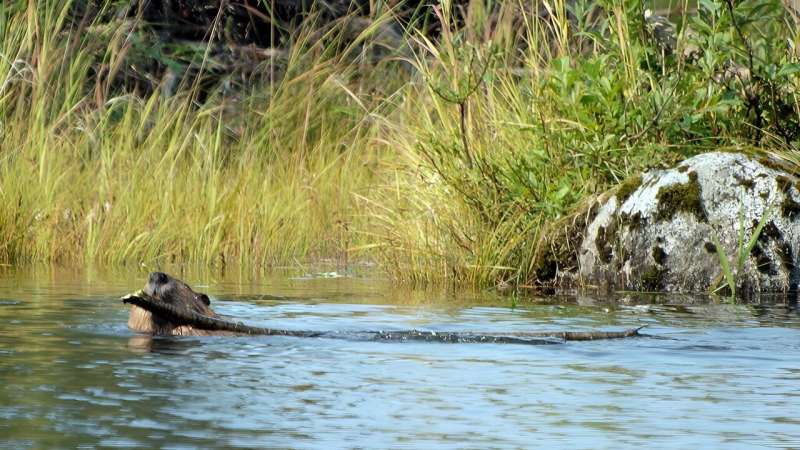This article has been reviewed according to Science X's editorial process and policies. Editors have highlighted the following attributes while ensuring the content's credibility:
fact-checked
proofread
Research shows beavers are remaking microbial ecosystems in the Arctic

As the Arctic has warmed and beaver populations have rebounded, the animal architects known for greatly modifying their natural environments have moved to higher and higher latitudes. Now, researchers show that beaver-instigated alterations translate all the way to the microscopic level, reshaping microbial communities in Arctic waterways. The work is published in the Journal of Geophysical Research: Biogeosciences.
In northern Alaska, the researchers waded into the water and sampled sediment from seven ponds formed by beavers and from seven beaver-free lakes and streams. Back in the lab, they analyzed the populations of bacteria, archaea, and fungi present in the samples.
The overall prevalence of microbes in the sediments from beaver habitats and in those from beaver-free streams was similar, whereas microbial communities from lakes lacking dams differed from those in beaver ponds. The diversity of bacteria and archaea was particularly variable, whereas abundant fungal communities were less influenced by the presence of beavers.
The team's analysis turned up some surprises. For example, the researchers found that the beaver ponds contained low levels of archaea that produce methane, a potent greenhouse gas. In contrast, previous research suggested that beaver activity can increase microbial methane production, leading the team to hypothesize that the sampled beaver ponds may be young and may become more methanogenic as they age.
Beaver-induced changes at the microbial level may result in ecosystem-scale shifts, the researchers note, although it's too early to tell exactly how the animals will affect northern Alaska as the climate changes. Beaver dams favor microbes that promote plant growth, and as vegetation moves farther north in the Arctic, beavers will surely follow.
The increasingly plant rich environments will likely capture more carbon, helping to mitigate carbon emissions from the environment, but in the long run, those gains may be offset by carbon released as microbes break down the vegetation. Also, the standing water that occurs when beavers make dams may hasten permafrost thaw, potentially stimulating microbial growth.
More information: Kelly C. Shannon et al, Comparing Sediment Microbial Communities of Arctic Beaver Ponds to Tundra Lakes and Streams, Journal of Geophysical Research: Biogeosciences (2023). DOI: 10.1029/2023JG007408
Provided by Eos
This story is republished courtesy of Eos, hosted by the American Geophysical Union. Read the original story here.

















